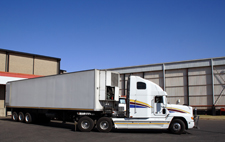 A recent plea agreement by Wal-Mart Stores Inc. is a stark reminder of the fines and penalties retailers face if they improperly handle and transport hazardous materials.
A recent plea agreement by Wal-Mart Stores Inc. is a stark reminder of the fines and penalties retailers face if they improperly handle and transport hazardous materials.
The U.S. Environmental Protection Agency (EPA) announced on Tuesday that Wal-Mart pled guilty in cases involving the illegal handling and disposing of hazardous materials at retail stores across the country. As a result of the cases, Wal-Mart will pay more than $81 million in fines.
An EPA press release provided details on Wal-Mart’s infractions:
“… from a date unknown until January 2006, Wal-Mart did not have a program in place and failed to train its employees on proper hazardous waste management and disposal practices at the store level. As a result, hazardous wastes were either discarded improperly at the store level – including being put into municipal trash bins or, if a liquid, poured into the local sewer system – or they were improperly transported without proper safety documentation to one of six product return centers located throughout the United States.”
A complete copy of the EPA press release can be found on the agency’s website.
This is not the first incident for Wal-Mart involving hazardous materials that has proved costly. In 2010, the company agreed to pay $27.6 million to settle allegations that it improperly handled and disposed of pesticides, fertilizers, paints, aerosols and other chemicals at stores and distribution centers. Wal-Mart also agreed to a settlement with the Pipeline and Hazardous Materials Safety Administration (PHMSA) in 2009 related to violations of U.S. hazardous materials regulations.
Improperly handling and shipping of hazardous materials during the reverse logistics phase of the supply chain is a common issue that many of today’s largest retailers contend with. Retailers can help their reverse logistics operations achieve better regulatory compliance by taking a number of steps, including:
- Promoting safety
- Defining lines of safety accountability
- Implementing an effective employee training program
- Auditing reverse logistics operations
- Correcting deficiencies
For additional information on how to approach hazardous materials when they are either being returned or disposed of, please read our previous blog post, “Product Returns Present a Hazmat Challenge for Retailers.”